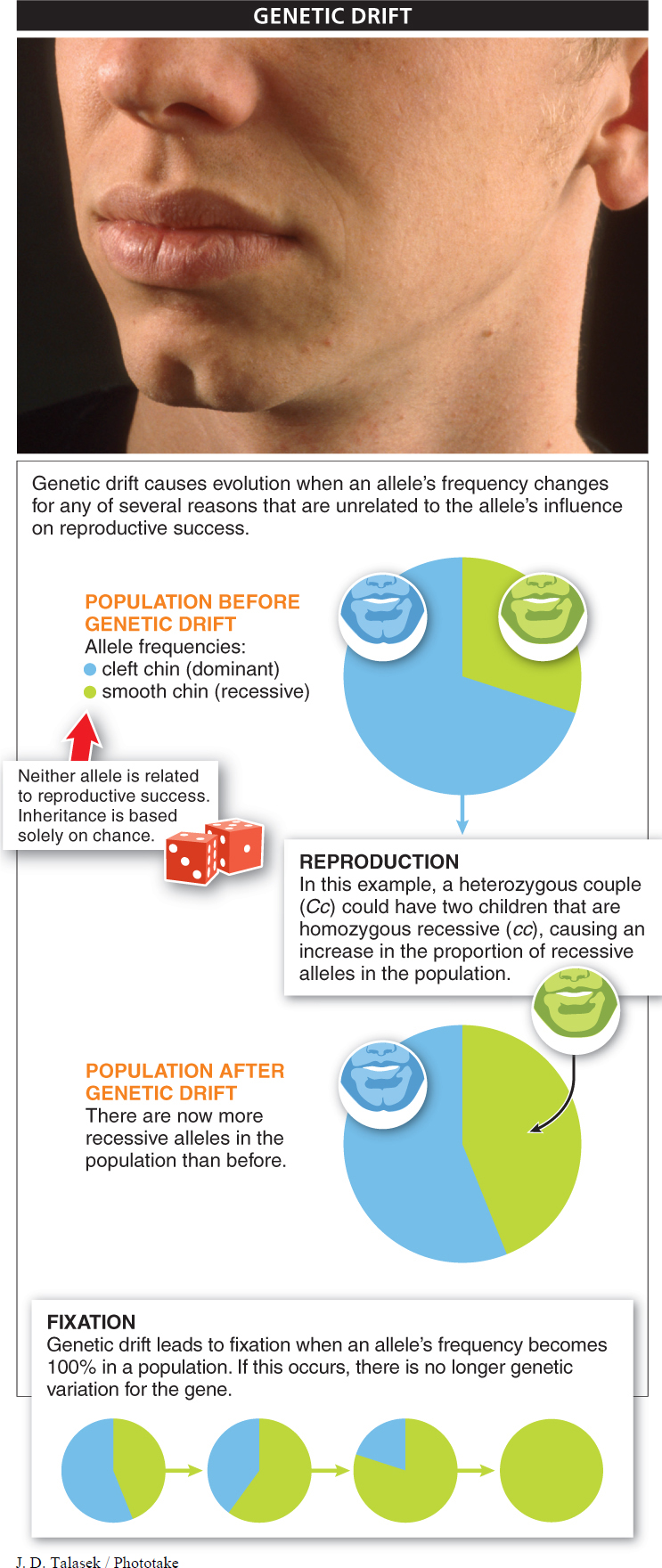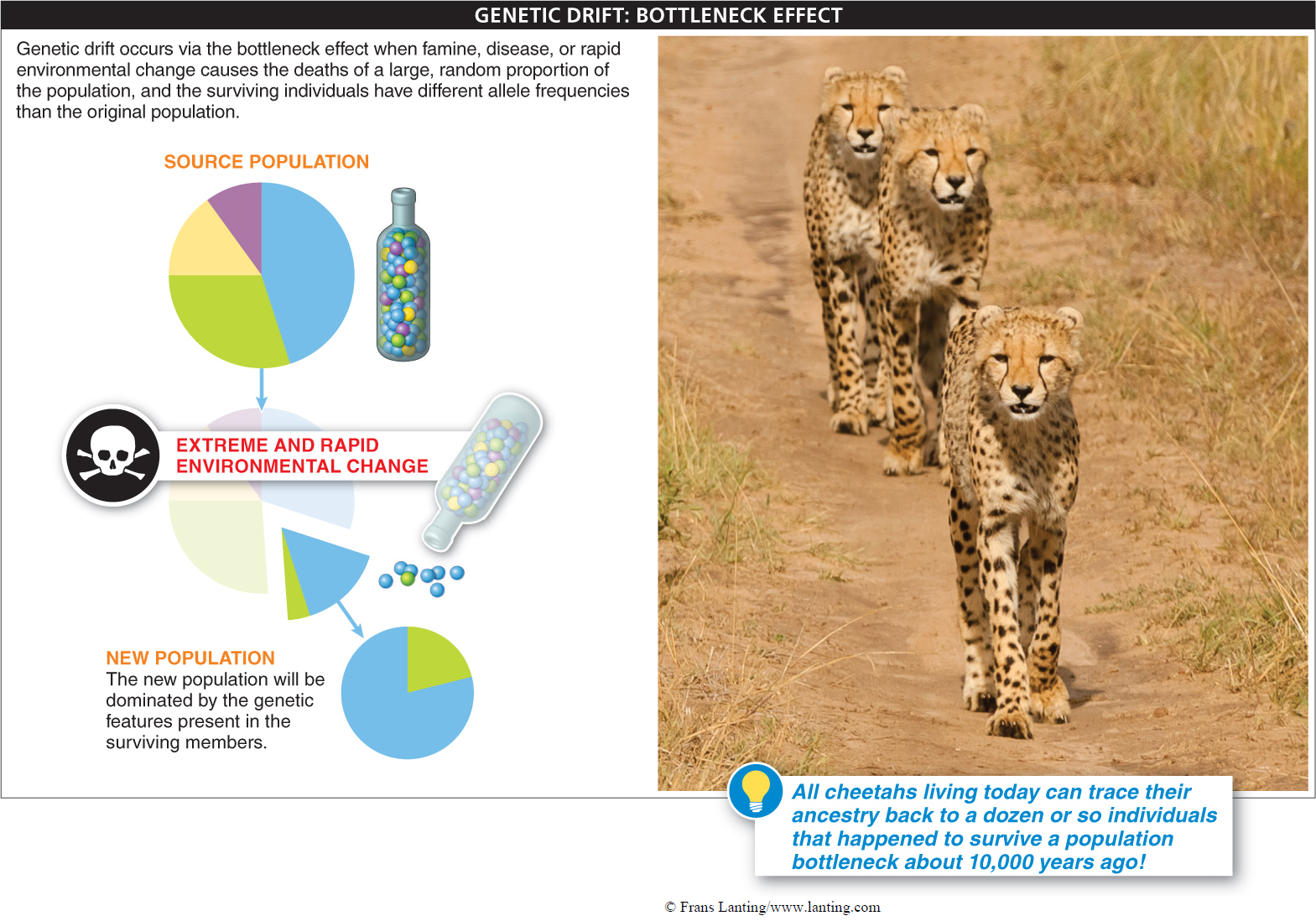Another evolutionary mechanism is genetic drift, a random change in allele frequencies in a population. For example, consider two alleles for a particular trait, let’s say a cleft chin. We’ll assume that it’s a single-

This impact of genetic drift is much greater in small populations than in large populations. In a large population, any one couple having a child with two recessive alleles is likely to be offset by another couple having one child with two dominant alleles. When that happens, the overall allele frequencies in the population do not change, and evolution has not occurred.
One of the most important consequences of genetic drift is that it can lead to fixation for one allele of a gene in a population (see Figure 8-
The important factor that distinguishes genetic drift from natural selection is that the change in allele frequencies is not related to the alleles’ influence on reproductive success. This doesn’t mean that genetic drift is confined to alleles that have no effect on fitness. Rather, it just refers to the cause of an allele’s change in frequency. Multiple evolutionary mechanisms can occur simultaneously—
329
Two special cases of genetic drift, the founder effect and population bottleneck effect, are important in the evolution of many populations.
Founder Effect A small number of individuals may leave a population and become the founding members of a new, isolated population. The founder population may have different allele frequencies than the original, “source” population, particularly if the founders are a small group. If this new population does have different allele frequencies, evolution has occurred. Because the founding members of the new population will give rise to all subsequent individuals, the new population will be dominated by the genetic features that happened to be present in that group of founding fathers and mothers. This type of genetic drift is called the founder effect.
Why are Amish people more likely than other people to have extra fingers and toes?
The Amish population in the United States is thought to have been established by a small number of founders, some of whom happened to carry the allele for polydactyly—the condition of having extra fingers and toes. As a consequence, this trait, while rare, now occurs much more frequently among the Amish than it does worldwide (FIGURE 8-13).

Population Bottleneck Effect Occasionally, a famine, disease, or rapid environmental change causes the deaths of a large proportion of individuals in a population. Because the population is quickly reduced to a small fraction of its original size, this reduction is called a bottleneck. If the catastrophe is equally likely to strike any member of the population, the remaining members are essentially a random, small sample of the original population. For this reason, the remaining population may not possess the same allele frequencies as the original population. Thus, the consequence of such a population bottleneck would be evolution through genetic drift (FIGURE 8-14).

Just such a population bottleneck occurred with cheetahs near the end of the last ice age, about 10,000 years ago. Although the cause is unknown—
330
331
TAKE-HOME MESSAGE 8.7
Genetic drift is a random change in allele frequencies within a population, unrelated to the alleles’ influence on reproductive success. Genetic drift is a significant mechanism of evolutionary change, primarily in small populations.
Why would a characteristic such as having a cleft chin change within a population over time if this trait doesn’t help or hurt an individual?
Cleft chins are as likely to increase in a population over time as they are to decrease. The changes are random and are not in response to the environment.